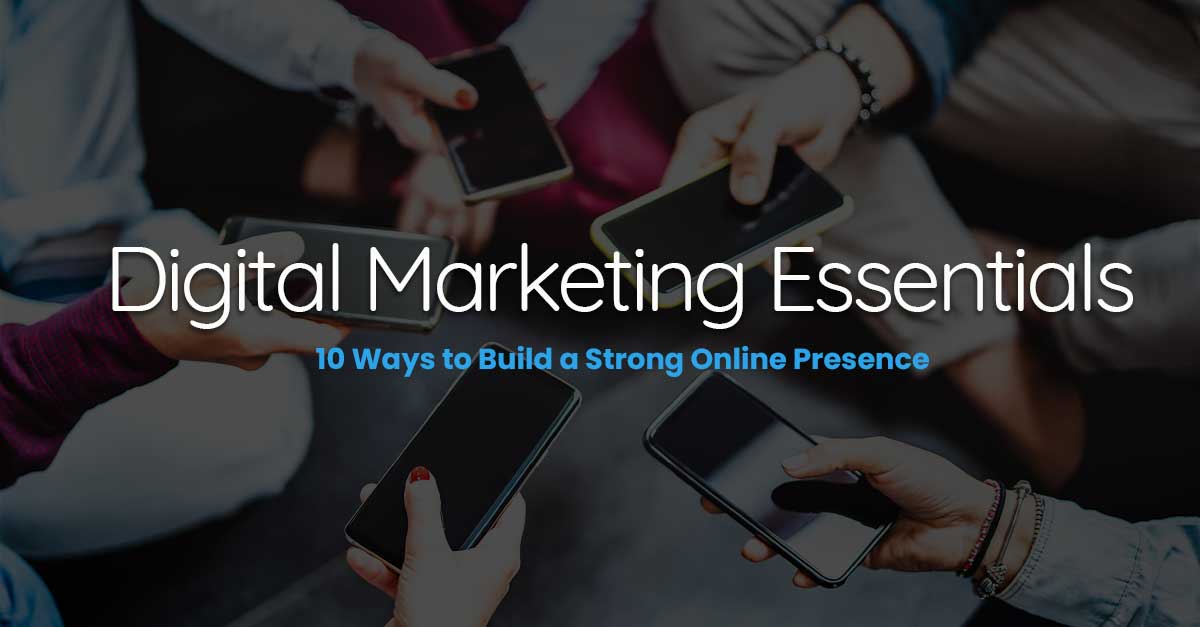Why E-commerce is a Lucrative Opportunity for Entrepreneurs
The rise of e-commerce has revolutionized the way people shop, and entrepreneurs are taking notice. With the global e-commerce market projected to reach $4.9 trillion by 2023, it’s no wonder why many are eager to tap into this lucrative opportunity. E-commerce provides a platform for businesses to reach a vast audience, increase brand visibility, and drive sales. In fact, a well-executed e-commerce strategy can help businesses generate significant revenue and stay ahead of the competition
Why E-commerce is a Lucrative Opportunity for Entrepreneurs
The rise of e-commerce has revolutionized the way people shop, and entrepreneurs are taking notice. With the global e-commerce market projected to reach $4.9 trillion by 2023, it’s no wonder why many are eager to tap into this lucrative opportunity. E-commerce provides a platform for businesses to reach a vast audience, increase brand visibility, and drive sales. In fact, a well-executed e-commerce strategy can help businesses generate significant revenue and stay ahead of the competition.
One of the primary reasons e-commerce is so attractive to entrepreneurs is its low barrier to entry. With the help of e-commerce platforms like Shopify, WooCommerce, and BigCommerce, businesses can quickly set up an online store and start selling products. Additionally, the cost of maintaining an e-commerce website is significantly lower compared to traditional brick-and-mortar stores. This makes it an ideal option for small businesses and startups looking to test the waters.
Another advantage of e-commerce is its ability to provide businesses with valuable data and insights. By analyzing website traffic, sales, and customer behavior, businesses can make informed decisions to optimize their marketing strategies and improve customer engagement. This data-driven approach enables businesses to stay agile and adapt to changing market trends, giving them a competitive edge in the industry.
Furthermore, e-commerce provides businesses with the opportunity to expand their reach beyond geographical boundaries. With a well-designed website and effective marketing strategy, businesses can attract customers from all over the world. This global reach enables businesses to tap into new markets, increase brand awareness, and drive revenue.
However, to succeed in e-commerce, businesses need to have a solid understanding of their target audience, market trends, and the competitive landscape. By conducting thorough market research and analyzing consumer behavior, businesses can identify opportunities to differentiate themselves and create a unique value proposition. This, combined with a well-executed e-commerce strategy, can help businesses generate significant revenue and achieve long-term success.
In the world of e-commerce, making money is not just about selling products; it’s about creating a seamless customer experience, building brand loyalty, and driving repeat business. By focusing on these key areas, businesses can unlock the secrets of online wealth and achieve success in the competitive world of e-commerce.
Building a Strong Online Presence: Essential Strategies
In the world of e-commerce, having a strong online presence is crucial for success. A professional website, social media presence, and content marketing strategy are essential components of a well-rounded online presence. These elements work together to create a cohesive brand image, engage customers, and drive sales.
A professional website is the foundation of a strong online presence. It should be visually appealing, easy to navigate, and optimized for search engines. A well-designed website can help establish trust with customers, increase brand credibility, and improve conversion rates. When building a website, it’s essential to consider the user experience, mobile responsiveness, and page loading speed.
Social media is another critical component of a strong online presence. Platforms like Facebook, Instagram, and Twitter provide businesses with an opportunity to connect with customers, share content, and build brand awareness. A social media presence can help drive traffic to a website, increase engagement, and improve customer loyalty. When creating a social media strategy, it’s essential to consider the target audience, content type, and posting frequency.
Content marketing is a powerful tool for building a strong online presence. It involves creating and sharing valuable, relevant, and consistent content to attract and retain a clearly defined audience. Content marketing can help establish a business as a thought leader in its industry, drive traffic to a website, and improve conversion rates. When creating a content marketing strategy, it’s essential to consider the content type, distribution channels, and measurement metrics.
Influencer marketing is another effective way to build a strong online presence. It involves partnering with influencers who have a large following in a specific niche or industry. Influencer marketing can help increase brand awareness, drive traffic to a website, and improve conversion rates. When selecting influencers, it’s essential to consider their audience demographics, engagement rates, and content quality.
Search engine optimization (SEO) is also critical for building a strong online presence. It involves optimizing a website and content to rank higher in search engine results pages (SERPs). SEO can help increase website visibility, drive organic traffic, and improve conversion rates. When creating an SEO strategy, it’s essential to consider keyword research, on-page optimization, and link building.
By implementing these essential strategies, businesses can build a strong online presence that drives traffic, engagement, and sales. A well-rounded online presence is critical for success in e-commerce, and can help businesses establish a competitive edge in their industry.
How to Source Products and Manage Inventory Effectively
In e-commerce, sourcing products and managing inventory are crucial components of a successful business. With the right products and effective inventory management, businesses can increase sales, reduce costs, and improve customer satisfaction. In this article, we will discuss the different options for sourcing products, including dropshipping, private labeling, and wholesale purchasing, and provide tips on how to manage inventory, track orders, and optimize logistics.
Dropshipping is a popular option for e-commerce businesses, as it allows them to sell products without holding any inventory. With dropshipping, businesses partner with a supplier who ships products directly to customers. This option is ideal for businesses that want to test new products or markets without committing to large inventory purchases. However, dropshipping can be challenging, as businesses have limited control over shipping and product quality.
Private labeling is another option for e-commerce businesses, as it allows them to create their own branded products. With private labeling, businesses partner with a supplier who manufactures products with their branding. This option is ideal for businesses that want to create a unique brand identity and differentiate themselves from competitors. However, private labeling can be expensive, as businesses need to invest in product development and branding.
Wholesale purchasing is a traditional option for e-commerce businesses, as it allows them to purchase products in bulk from suppliers. With wholesale purchasing, businesses can negotiate prices, control inventory, and manage shipping. This option is ideal for businesses that want to offer a wide range of products and have control over inventory management. However, wholesale purchasing can be challenging, as businesses need to manage inventory levels, track orders, and optimize logistics.
Regardless of the sourcing option, effective inventory management is crucial for e-commerce businesses. This includes tracking inventory levels, managing orders, and optimizing logistics. Businesses can use inventory management software to streamline these processes and improve efficiency. Additionally, businesses can use data analytics to optimize inventory levels, reduce waste, and improve customer satisfaction.
In conclusion, sourcing products and managing inventory are critical components of a successful e-commerce business. By understanding the different options for sourcing products and implementing effective inventory management strategies, businesses can increase sales, reduce costs, and improve customer satisfaction. Whether through dropshipping, private labeling, or wholesale purchasing, businesses can find the right products and manage inventory effectively to achieve success in e-commerce.
By following these tips and strategies, businesses can optimize their product sourcing and inventory management processes, and achieve success in e-commerce. Remember, the key to success in e-commerce is to find the right products, manage inventory effectively, and provide excellent customer service.
Effective Marketing and Promotion Techniques for E-commerce
In the world of e-commerce, marketing and promotion are crucial components of a successful business. With the right marketing strategies, businesses can drive traffic, increase sales, and build brand awareness. In this article, we will discuss the importance of marketing and promotion in e-commerce, including tips on how to use email marketing, paid advertising, and affiliate marketing to drive traffic and sales.
Email marketing is a powerful tool for e-commerce businesses, as it allows them to connect with customers and promote products. With email marketing, businesses can create targeted campaigns, track open rates, and measure conversion rates. To get the most out of email marketing, businesses should focus on building a strong email list, creating engaging content, and optimizing for mobile devices.
Paid advertising is another effective way to drive traffic and sales in e-commerce. With paid advertising, businesses can reach a large audience, increase brand awareness, and drive conversions. To get the most out of paid advertising, businesses should focus on targeting the right audience, creating compelling ad copy, and optimizing for ROI.
Affiliate marketing is a popular way for e-commerce businesses to partner with influencers and promote products. With affiliate marketing, businesses can reach a large audience, increase brand awareness, and drive sales. To get the most out of affiliate marketing, businesses should focus on partnering with the right influencers, creating compelling content, and tracking affiliate sales.
Social media marketing is also an important component of e-commerce marketing. With social media marketing, businesses can connect with customers, promote products, and build brand awareness. To get the most out of social media marketing, businesses should focus on creating engaging content, using relevant hashtags, and optimizing for mobile devices.
Content marketing is another effective way to drive traffic and sales in e-commerce. With content marketing, businesses can create valuable content, attract links, and build brand awareness. To get the most out of content marketing, businesses should focus on creating high-quality content, optimizing for SEO, and promoting content on social media.
By incorporating these marketing and promotion techniques into their e-commerce strategy, businesses can drive traffic, increase sales, and build brand awareness. Remember, the key to success in e-commerce is to create a comprehensive marketing strategy that incorporates multiple channels and tactics.
By following these tips and strategies, businesses can optimize their marketing and promotion efforts, and achieve success in e-commerce. Whether through email marketing, paid advertising, affiliate marketing, social media marketing, or content marketing, businesses can drive traffic, increase sales, and build brand awareness.
Optimizing Your Website for Conversions: A Step-by-Step Guide
In e-commerce, a well-designed website is crucial for driving conversions and generating revenue. A website that is optimized for conversions can help businesses increase sales, improve customer satisfaction, and stay ahead of the competition. In this article, we will provide a step-by-step guide on how to optimize an e-commerce website for conversions, including tips on how to improve user experience, simplify navigation, and increase average order value.
Step 1: Improve User Experience
A well-designed website should provide a seamless user experience, making it easy for customers to find what they are looking for and complete a purchase. To improve user experience, businesses should focus on creating a clean and simple design, optimizing for mobile devices, and ensuring fast page loading speeds.
Step 2: Simplify Navigation
A website with simple navigation can help customers quickly find what they are looking for and reduce bounce rates. To simplify navigation, businesses should focus on creating a clear and concise menu, using breadcrumbs to help customers navigate, and ensuring that all pages are easily accessible.
Step 3: Increase Average Order Value
Increasing average order value can help businesses generate more revenue and improve customer satisfaction. To increase average order value, businesses should focus on offering related products, providing discounts for bulk purchases, and using upselling and cross-selling techniques.
Step 4: Optimize Product Pages
Product pages are a critical component of an e-commerce website, as they provide customers with the information they need to make a purchase. To optimize product pages, businesses should focus on creating high-quality product images, writing detailed product descriptions, and providing customer reviews and ratings.
Step 5: Streamline the Checkout Process
A streamlined checkout process can help businesses reduce cart abandonment rates and increase conversions. To streamline the checkout process, businesses should focus on creating a simple and secure checkout process, offering guest checkout options, and providing clear shipping and payment information.
By following these steps and optimizing their website for conversions, businesses can improve user experience, increase sales, and stay ahead of the competition. Remember, a well-designed website is crucial for driving conversions and generating revenue in e-commerce.
By optimizing their website for conversions, businesses can improve customer satisfaction, increase sales, and stay ahead of the competition. Whether through improving user experience, simplifying navigation, or increasing average order value, businesses can optimize their website for conversions and achieve success in e-commerce.
Managing Finances and Tracking Performance in E-commerce
In e-commerce, financial management is crucial for success. Businesses need to track expenses, manage cash flow, and analyze key performance indicators (KPIs) to measure success. In this article, we will discuss the importance of financial management in e-commerce, including tips on how to track expenses, manage cash flow, and analyze KPIs.
Tracking Expenses
Tracking expenses is essential for e-commerce businesses to understand where their money is going and make informed decisions. Businesses should track expenses such as inventory costs, shipping costs, and marketing expenses. By tracking expenses, businesses can identify areas where they can cut costs and improve profitability.
Managing Cash Flow
Managing cash flow is critical for e-commerce businesses to ensure they have enough money to meet their financial obligations. Businesses should manage cash flow by tracking accounts receivable, accounts payable, and inventory levels. By managing cash flow, businesses can avoid cash flow problems and ensure they have enough money to invest in growth.
Analyzing Key Performance Indicators (KPIs)
Analyzing KPIs is essential for e-commerce businesses to measure success and make informed decisions. Businesses should track KPIs such as conversion rates, average order value, and customer lifetime value. By analyzing KPIs, businesses can identify areas where they can improve and make data-driven decisions.
Financial Management Tools
There are many financial management tools available for e-commerce businesses, including accounting software, inventory management software, and analytics tools. Businesses should use these tools to track expenses, manage cash flow, and analyze KPIs. By using financial management tools, businesses can streamline their financial management processes and make informed decisions.
Best Practices for Financial Management
There are several best practices for financial management in e-commerce, including tracking expenses, managing cash flow, and analyzing KPIs. Businesses should also use financial management tools, such as accounting software and inventory management software, to streamline their financial management processes. By following these best practices, businesses can ensure they are managing their finances effectively and making informed decisions.
By managing finances effectively, e-commerce businesses can ensure they are profitable and sustainable. Financial management is a critical component of e-commerce success, and businesses should prioritize it to achieve long-term success.
By following these tips and best practices, e-commerce businesses can manage their finances effectively and achieve long-term success. Remember, financial management is a critical component of e-commerce success, and businesses should prioritize it to ensure they are profitable and sustainable.
Scaling Your E-commerce Business for Long-term Success
Scaling an e-commerce business requires careful planning, strategic decision-making, and a focus on long-term growth. In this article, we will provide advice on how to scale an e-commerce business for long-term success, including tips on how to expand product lines, enter new markets, and build a team to support growth.
Expanding Product Lines
Expanding product lines can help e-commerce businesses increase revenue and attract new customers. To expand product lines, businesses should conduct market research to identify gaps in the market and opportunities for growth. They should also consider the competition, target audience, and pricing strategy when selecting new products.
Entering New Markets
Entering new markets can help e-commerce businesses increase revenue and expand their customer base. To enter new markets, businesses should conduct market research to identify opportunities for growth and understand the local competition. They should also consider the cultural and linguistic differences of the new market and adapt their marketing strategy accordingly.
Building a Team to Support Growth
Building a team to support growth is essential for e-commerce businesses that want to scale. To build a team, businesses should identify the skills and expertise they need to support growth and hire employees who can fill those gaps. They should also consider outsourcing certain tasks or functions to freelancers or agencies to save time and money.
Investing in Technology
Investing in technology can help e-commerce businesses streamline their operations, improve efficiency, and support growth. To invest in technology, businesses should identify the tools and software they need to support growth and implement them in a way that is scalable and flexible.
Measuring and Analyzing Performance
Measuring and analyzing performance is essential for e-commerce businesses that want to scale. To measure and analyze performance, businesses should track key performance indicators (KPIs) such as revenue, customer acquisition costs, and customer lifetime value. They should also use data analytics tools to identify areas for improvement and make data-driven decisions.
By following these tips and strategies, e-commerce businesses can scale for long-term success and achieve their goals. Remember, scaling an e-commerce business requires careful planning, strategic decision-making, and a focus on long-term growth.
By scaling their e-commerce business, entrepreneurs can increase revenue, expand their customer base, and achieve long-term success. Whether through expanding product lines, entering new markets, or building a team to support growth, entrepreneurs can take their e-commerce business to the next level and achieve their goals.








